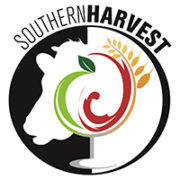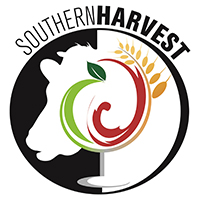As interest grows among consumers in sourcing their food from local producers, it is worth looking at resilience in the local food system as one of the many benefits.
The term resilience has roots in the Latin word resilio, which means to ‘jump back’1; and broadly it is defined as a return to an original state. In a food context, resilience is the ability of a community to maintain a certain level of wellbeing by withstanding shocks or stressors to its food security.1 Such impacts might be natural disasters, transportation problems, water shortages and other disturbances that can disrupt the supply of food being brought long distances from other regions or countries. To have at least some level of self-sufficiency in food production provides the local community with security if its broader food supply is disrupted.
A resilient local food system is one that promotes self-reliance and empowerment to provide for a community’s own food needs.2 Food production, processing, distribution and consumption are integrated to benefit the overall health of a particular place – socially, economically, nutritionally and environmentally. Inclusion of the word ‘community’ places an emphasis on strengthening existing, or developing new, relationships between all components of the food system.2
We can look to countries such as the United States for models of local food resilience, and where the literature on this topic is quite extensive. Again, often there is an emphasis on the community’s involvement in their food system. For example, an article from the US Community Food Security Coalition on what a ‘secure and resilient food system’ looks like refers to ‘a condition in which all community residents obtain a safe, culturally acceptable, nutritionally adequate diet through a sustainable food system that maximizes community self-reliance and social justice’.3
Another US source4 refers to community food systems, the key features of which include equity, sustainability, self-reliance, empowerment, and individual and communal wellness. The authors provide a long list of what can be found in a ‘secure and resilient’ community food system, covering issues such as health promotion, business support and employment, consumption of seasonally available foods and strengthening of farm to community connections.
A potential and worthwhile aim of our own region’s food policy and planning is to create a resilient food system. The recent Discussion paper – Towards an ACT Region Food Policy and Food Plan – states that a ‘roadmap’ for all ACT food system stakeholders will be provided to ‘ensure that a resilient food system is achieved’.5 As well as setting a target for 30% of food consumption to be sourced from the ACT Region by 2030, the plan aims to create a resilient ACT food system by:
strengthening, and ensuring diversity within, the local food economy to protect the community against potential shocks to the system (eg oil or water shortages); and
ensuring food supplies are adequate, accessible, affordable and nutritionally balanced.5
Diversity in the food supply is important in the creation of a resilient local food system. The authors of the Discussion paper believe that: ‘By supporting this local food economy, the food cycle becomes increasingly more multifaceted and less reliant on one sole means of food supply, making the overall system much more resilient’.
In coming issues of The Southern Harvest newsletter, we will look more closely at resilience in our food system, and the roles played by producers, consumers, farmers markets and organisations such as Southern Harvest.
References
- Klein, Nicholls, and Thomalla 2003; Understanding Resilience for Food and Nutrition Security. http://www.ifpri.org/ghi/2013/understanding-resilience
- E. Mane, L. Alinovi, D. Melvin 2010 Measuring resilience – A concept note. www.fao.org/docrep/013/al920e/al920e00.p
- Hamm and Bellow; What Is Community Food Security? Community Food Security Coalition; Found at http://www.foodsecurity.org/views_cfs_faq.html
- Hamm and Bellow; What Is Community Food Security? Community Food Security Coalition; Found at http://www.foodsecurity.org/views_cfs_faq.html
- Eames-Sheavly, M., J. Wilkins. A Primer on Community Food Systems: Linking Food, Nutrition and Agriculture, In Discovering the Food System: an experiential learning program for young and inquiring minds. Cornell University, Department of Nutritional Sciences and Department of Horticulture. Found at http://www.discoverfoodsys.cornell.edu/primer.html
- Discussion Paper: Towards an ACT Region Food Policy and Food Plan March 2015
Merran Laver is a freelance writer / editor with an interest in food, nutrition and health.
Read Merran’s other articles:


Leave A Comment